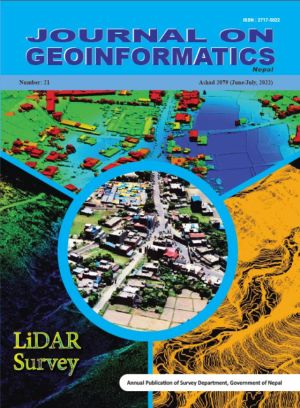Detecting Surface Displacement in Kathmandu Valley with Persistent Scatterer Interferometry
DOI:
https://doi.org/10.3126/njg.v21i1.50878Keywords:
Interferometry, Subsidence, Persistent Scatterer InterferometryAbstract
Kathmandu Valley has been susceptible to surface displacement due to natural as well as anthropogenic causes since a long time. Previous studies till 2017 suggest that displacement (specially subsidence) with rates of several centimeters per year have occurred in the Kathmandu Valley indicating uncontrolled groundwater withdrawal as the major cause. Owing to the history of surface displacement, this study aims at detecting the nature of land subsidencein Kathmandu for years: 2017 (18th January to 26th December) and 2019 (2nd January to 28th December) based on Persistent Scatterer Interferometry (PSI) technique using Synthetic Aperture Radar (SAR) datasets from Sentinel 1. PSI is able to detect persistently backscattering targets and evaluate respective displacements from the backscattered signal. The results of 2017 and 2019 revealed significant displacement of -100.54mm and -129.19mm along Line Of Sight (LOS) of radar during the study period at Baluwatar and Lazimpat area of Kathmandu district respectively. Similarly, New Baneshwor, Bode and Imadol exhibited a substantial displacement of -88.81mm,-103.55mm, -127.35mm respectively for year 2019.




